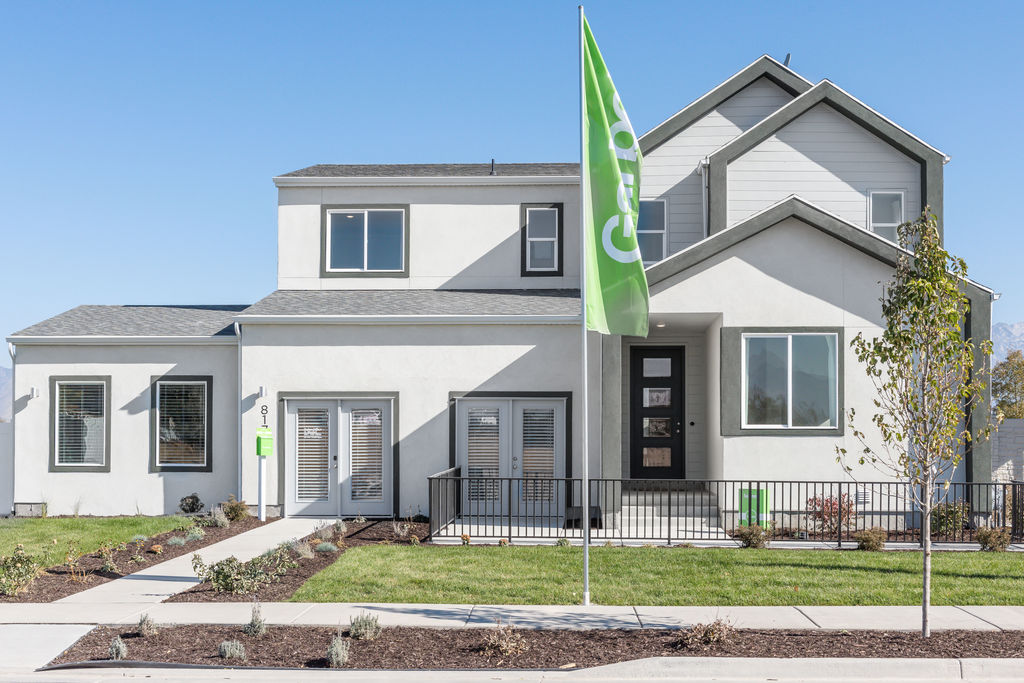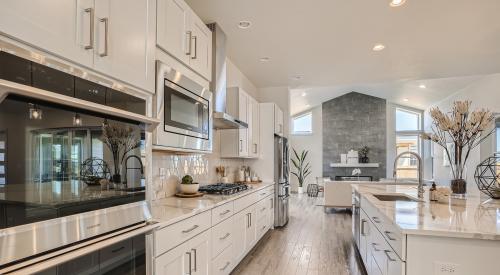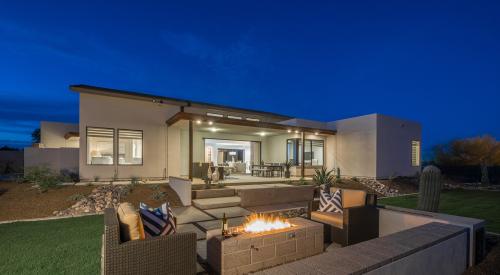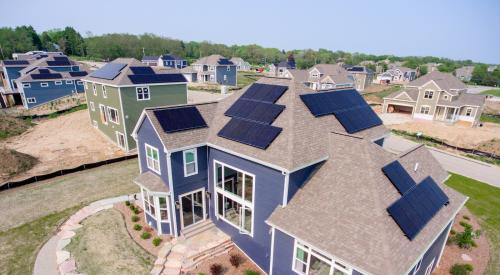In the aftermath of the Great Recession’s housing crisis, many builders were looking to save money on their construction practices—not spend more on them.
That’s where Garbett Homes found itself when the Department of Energy approached the Utah builder about the DOE’s Zero Energy Ready Homes (ZERH) program. The certification program has an extensive list of energy-efficient, high-performance requirements that affect many components of a home: appliances, windows, insulation, HVAC, water heater, air ducts, and indoor air quality.
“Keep in mind, we were coming out of a market that had essentially crashed when the bubble burst, so most builders, ourselves included, tried to cut back on costs,” says Eileen Whiting, vice president, sales and marketing, Garbett Homes.
The Zero Energy Ready Homes Program
But founder Bryson Garbett, who began his construction career over 30 years ago, had given his company a mission to create a positive impact on the environment by building efficient, healthy homes. “The Garbett family, and Bryson in particular, is very conscious about giving back to the earth and building homes that have less of a carbon footprint,” Whiting says.
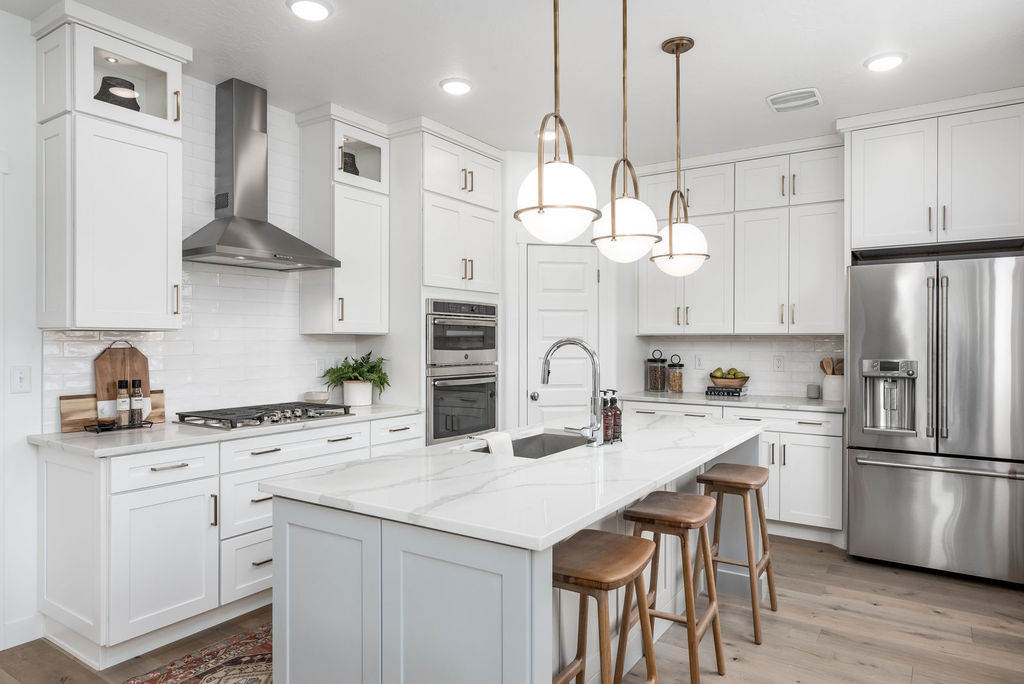
Still, the Zero Energy Ready Homes program, Whiting says, was “a big leap of faith for us.”
In 2015, Garbett Homes took that leap, completing its first ZERH-certified development. The following year, that project won the DOE’s Housing Innovation Award—an award that Garbett has since received every year.
Since then, every single property Garbett Homes has built has been ZERH certified—about 500 homes in total. “We learned there really is a market for healthy homes,” Whiting says. Garbett constructs about 130 to 150 homes a year, with plans to reach an annual average of 300.
How Garbett Homes achieves its zero energy ready goals
Garbett says its ZERH-certified homes are twice as efficient as typical new homes, with homeowners paying about 60% less on their monthly energy bills. Many different materials and methods go into creating that level of efficiency, including the following:
- To improve the home’s insulation, Garbett uses 2x6 studs in its walls, instead of the conventional 2x4, and spaces them apart by 24 inches, instead of the standard 16 inches. That creates more space to install more insulation. “We’ve taken the entire envelope of the home into account,” says Glenn Hoggan, marketing manager, Garbett Homes. “We think of how we can frame so we can insulate as much as possible.”
- Roofs in conventional homes form a tight V where they meet the walls. That’s a problem for insulation: “In a typical home, you can’t insulate in the corners of the roof,” Hoggan says. By contrast, Garbett’s raised heel roof truss creates space above the ceiling for blown-in insulation. “We maximize the insulation,” he says.
- Garbett uses low-emissivity (low-e) windows that help keep the heat out during the summer and the cold out during the winter. “It’s no good having tight insulation if you don’t close the loop with high-efficiency windows,” Hoggan says.
- An energy recovery ventilation (ERV) system filters the outside air as it enters the home while at the same time heating or cooling it. “The homes are so tightly sealed, but we don’t want the inside air to become unhealthy,” Hoggan says. “So the ERV replaces the air in the home with fresh air and filters it.”
- Instead of a standard water heater tank, Garbett uses a tankless, on-demand hot water system. It sends water that typically goes down the drain back to the water heater, while filling the line with hot water. So you don’t have to run and wastewater while you wait for it to get hot. “A traditional tanked water heater is very inefficient. You have to pay to heat water whether you’re using it not,” Hoggan says.
- Garbett’s optional solar panels convert sunlight into electricity. Each month, the utility company credits the homeowner’s account for any electricity generated beyond the amount used. Whiting says the builder aims to make solar power a standard offer in the near term.
For all the elements that go into its ZERH-certified homes, the builder has learned its buyers are fundamentally the same as others: It’s their experience of the home and the community, not the technical components, that makes that critical first impression. That’s why Garbett doesn’t hit potential buyers with a green-info dump upon hello.
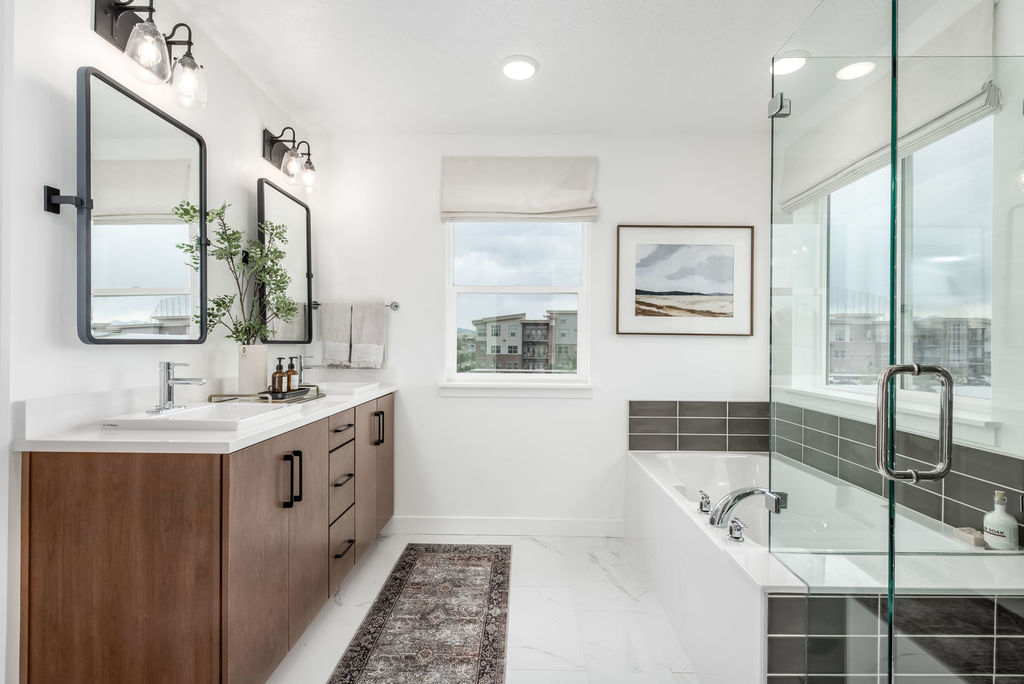
“They need to fall in love with your community and homes first. Then [ZERH] is the icing on the cake that really seals it,” Whiting says. “It’s still human nature to want to see the model home and picture yourself living in it—and then learn about all the green stuff that makes it so unique.”
That green stuff comes with a higher price tag. Garbett says it costs about 10% more to construct a ZERH-certified home than a code-built home.
Whiting points not just to the homes’ efficiency but to the lived benefits. One example: homeowners don’t feel a change in temperature from one floor to the next.
Another example: “Quite a few” asthmatic homeowners no longer need their inhalers after living in Garbett’s homes, Whiting says. “A lot of people say they want green homes, but they’re not willing to pay for it unless they can truly experience the benefits of it.”


